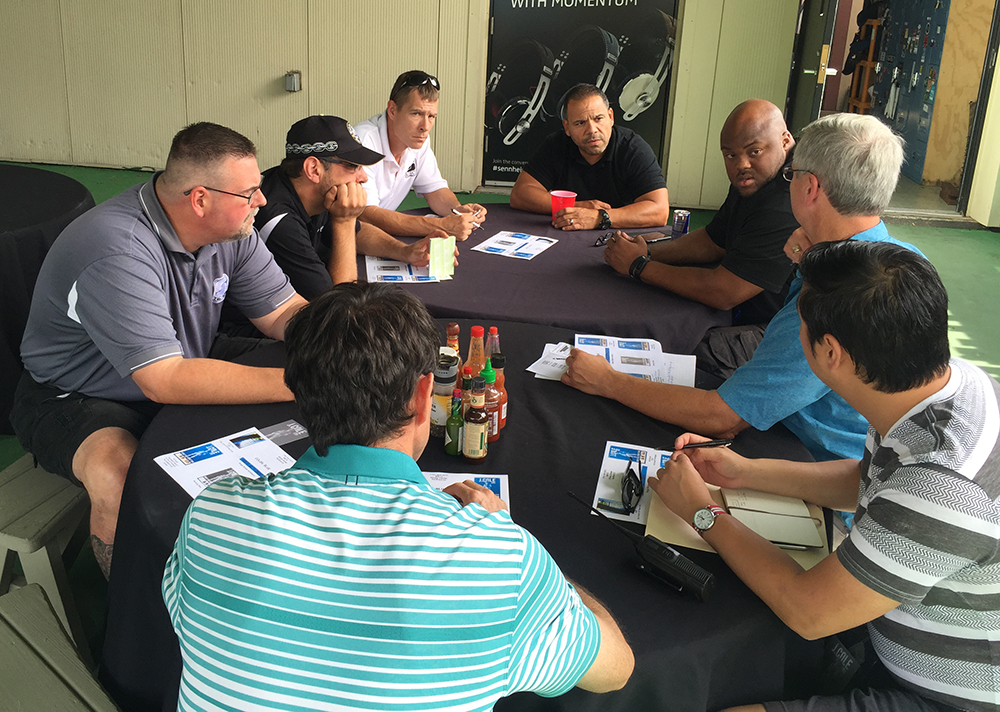The Saga continues, day after day, night after night as you travel from one city to the next visiting Theaters, Amphitheaters, Concert Halls and Arenas.
You are in full tour mode, arriving at locations in the wee hours of the morning ready to hit the ground running but not knowing exactly what to expect. Everyone is preparing for the big show while you are preparing a “show” of your own. You have ten hours to evaluate your locale as well as designate and coordinate the key players in your show. However, successfully navigating the security measures at venues and modifying them to your advantage can be a daunting task.
When you arrive at the venue you immediately begin your advance. Methodically and carefully you conduct your walk through as you check off every item on your Site Advance List. Egress points, safety of the stage, arrival & departure routes, Artists parking, security checkpoints, etc. Feeling confident having have addressed everything on your list you now believe you will be ready for show time. However, you know one intangible is always the uncertainty of the venue security staff. It’s a given that they may have varying levels of security knowledge depending on the location, regulations, and staff on hand that day.
On this date, you are at one of the most famous arenas in the world, with a crowd capacity of 20,000, a security force of 150, and a police presence assigned to the venue that consists of 25 Officers 3 Sergeants and a Lieutenant. So how do you interface with these various elements when your objective is to ensure control of the venue from a security standpoint? How do you handle an event of this magnitude with so many moving parts; administration, security personnel, and police? How do you bypass all of the “you can’t”, “it’s not permitted” and “there are no exceptions”? How do you walk into a security briefing with all of the key players and their “set in stone” security methods and successfully have them adapted molded and shaped to fit your specific needs?
The key to navigating through all of these obstacles is not in hand to hand combative techniques or precision marksmanship, but rather solid and direct communication. The art of expressing yourself, making your point, sharing your idea, negotiating and making deals. This is the one tool that will dull without use and that we must remember to continuously sharpen. At the end of the day, the goal is to make your principals arrival, temporary stay, and departure as uneventful and as smooth as possible. One of the keys is to speak plainly and keep it simple. The security briefing is not the place to throw around your eloquent knowledge and philosophy of executive protection. The ability to express yourself, listen, compromise, negotiate and understand body language is all part of the process that will help you achieve your goals.
Listen.
In order to be a good communicator, you need to be a good listener. When you are in that security briefing, listen attentively and show some interest. Take mental and written notes. Once the individual is finished speaking you can address your concerns and respond to the most important hurdles in your way. Listen and identify their greatest concerns. You may find that their greatest concern is pretty far down on your list and addressing early makes things go much smoother.
Observe.
Make note of the speaker’s body language as well as your own. Remember, the administration has to deal with venue concerns day in and day out, and at times they already have a preconceived notion about the traveling security. The speaker may have a stern, non-compromising posture and you know you will have to win his trust. One way is simply by stating” I know this is a security briefing, but relax we are not the enemy, we are here to help make this event go as smooth as possible.” Quickly break down any barriers you notice and be personable and receptive. Don’t fold your arms and puff up your chest at the end of the conference table. Instead, relax, lean in toward the speaker to show interest. Use open hand gestures when talking as it tells the listener you are approachable and you are someone with whom they can work. Nod your head when they are speaking as this also sends a positive signal.
Negotiate.
You’ve got to act like a businessman, a negotiator, a deal maker and compromise (within limits of course). Remember, your Principal and your team are counting on it. When you are faced with the “you can’t” and “there are no exceptions”, you need to be able to overcome those obstacles by negotiating and making deals. Find out the reason why you CAN’T and work on a way to bypass that. Remember to make sure that they get something out of the deal as well. Promise them the sink but deliver them the house.
Solid communication skills are essential to the Protector’s success if the intent is to rise above glorified bullet blocker. Just as we train in marksmanship and martial arts, verbal judo is an art the specialist needs to master.
Working with Entertainers: Communicating with the House
By: Sam Alicea


Leave a Reply